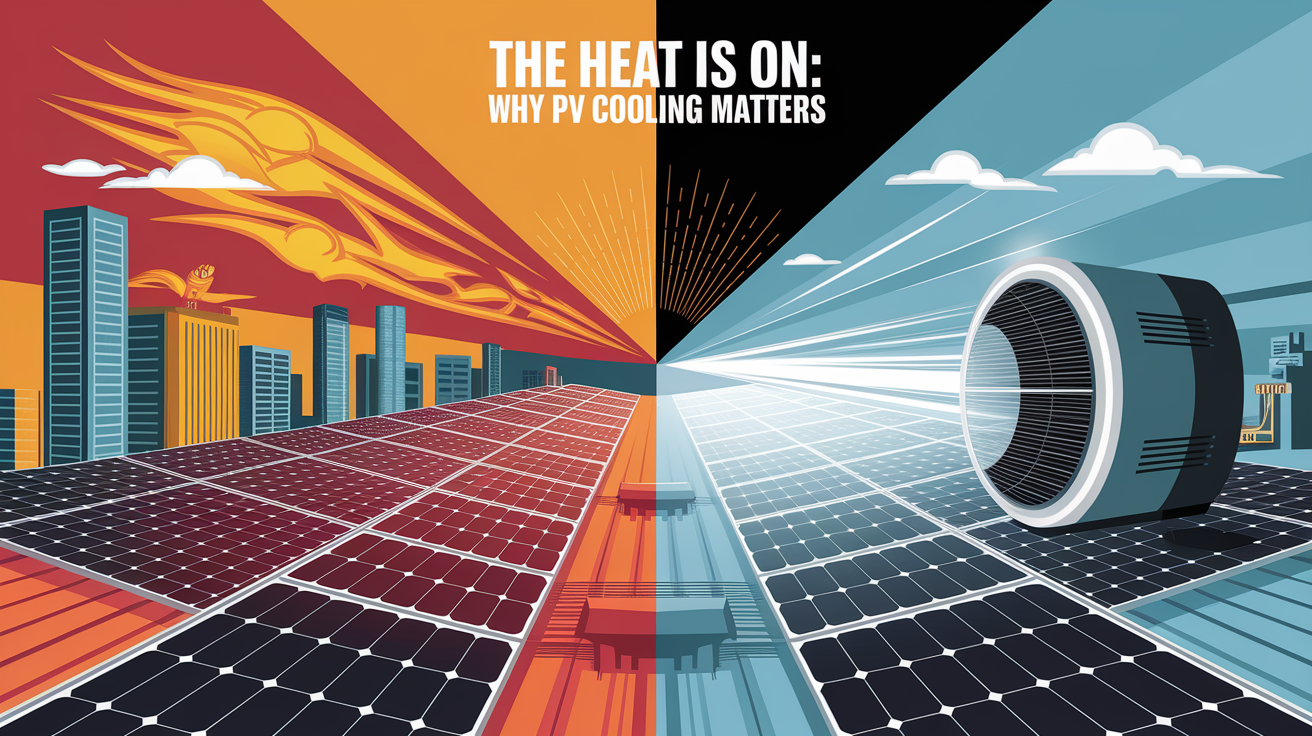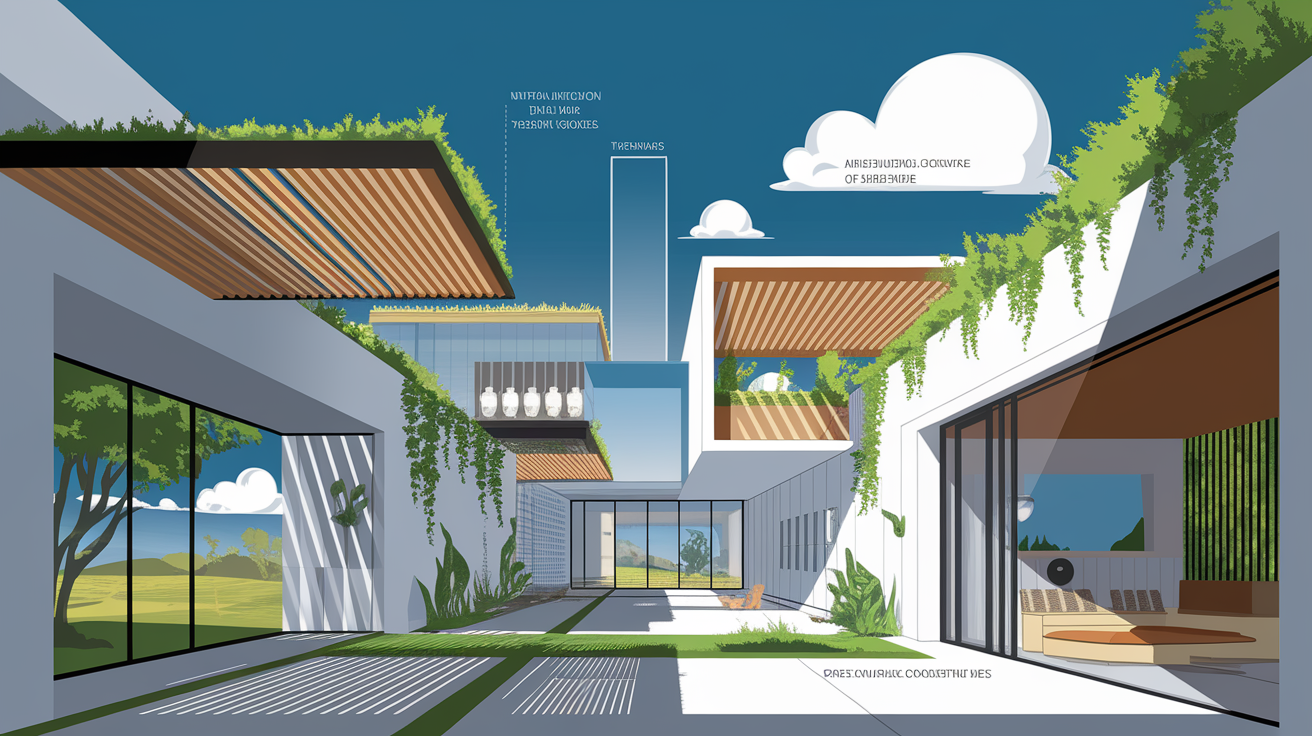Keep Your Solar Panels Chill: A Practical Guide to PV Module Cooling and Thermal Management
Introduction – The Heat Is On: Why PV Cooling Matters
Photovoltaic (PV) modules operate most efficiently at lower temperatures—yet, under full sun, surface temperatures can rise well above 60 °C. Every degree above the standard test condition of 25 °C chips away at performance: for crystalline silicon modules, expect a power drop of roughly 0.4–0.5% per degree Celsius. That means a 20 °C rise can cut power output by nearly 10%.

This performance loss isn’t just a temporary dip. Elevated operating temperatures increase internal resistance, accelerate module degradation, and shorten lifespan. Effective thermal management systems—whether active, passive, or hybrid—minimize overheating, improve daily energy yield, and maintain consistent system efficiency in hot climates where solar irradiance is high.
Passive Cooling Methods
Passive cooling takes advantage of natural heat dissipation without consuming additional energy. These solutions are durable, low-maintenance, and especially suitable for residential or small commercial systems.

- Natural Ventilation: Designing installations with open space beneath panels promotes convective heat transfer and keeps temperatures closer to ambient.
- Heat Sinks and Cooling Fins: Metal fins with high thermal conductivity draw heat away from PV cells and release it to the air.
- Reflective and Radiative Coatings: Special surface treatments reduce solar heat absorption by reflecting infrared wavelengths, lowering cell junction temperature.
- Phase Change Materials (PCMs): These materials stabilize temperatures by absorbing latent heat during melting, then releasing it when cooling.
Reflective coatings and PCMs have been shown to reduce module temperatures by up to 10 °C, delivering measurable efficiency gains. For a comprehensive overview, see this review of passive cooling techniques.
Active Cooling Solutions
When environmental conditions push PV surfaces far above optimal operating temperature, active cooling delivers stronger, more controlled results. These systems require mechanical input—fans, pumps, and sometimes compressors—but can substantially lower PV temperature and recover lost efficiency.

- Air Cooling: Forced air via fans increases airflow and convective heat removal. Ideal for moderate climates where large temperature drops aren’t necessary.
- Liquid Cooling: Water cooling systems, including those using nanofluids for enhanced thermal conductivity, excel in large or utility-scale arrays, absorbing heat effectively for temperature reductions of over 20 °C.
- Hybrid Cooling: Combining liquid and air circulation allows adaptable modulation for varying environmental loads.
Trials show forced air ventilation can keep PV temperatures just a few degrees above ambient, sustaining solar cell efficiency close to rated values. More examples are detailed in this active cooling systems overview.
Design and Installation Best Practices
Efficient thermal management begins with installation design. Even the best cooling methods underperform if modules are installed without airflow or heat dissipation considerations.

- Maximize Clearance: Ensure adequate gap between the module backsheet and the mounting surface to allow natural airflow.
- Orientation Optimization: Tilt panels to not only capture sunlight but also facilitate air movement beneath the array.
- Material Selection: Use mounting and frame materials with low thermal resistance where heat transfer away from modules is desired.
- Combine Techniques: Integrate passive design features with selective active systems for high-heat zones throughout the day.
Monitoring and Maintenance
Cooling performance should be verified over time. Routine inspection and monitoring helps detect inefficiencies early—saving both energy yield and equipment lifespan.
- Install temperature sensors to track real-time PV surface and ambient temperature conditions.
- Regularly clean modules to prevent dust buildup that impedes heat dissipation.
- Inspect fans, pumps, and fluid circulation components in active systems for wear or leaks.
- Evaluate long-term performance data to identify emerging thermal cycling or module degradation patterns.
Cost-Benefit Considerations
The business case for PV cooling solutions depends on climate, installation size, and energy pricing. Passive cooling has minimal ongoing costs, but delivers smaller absolute temperature reductions. Active systems can significantly enhance thermal performance, but their return on investment depends on the value of recovered energy versus installation, operational, and maintenance costs.
For example, a liquid cooling retrofit for a utility-scale plant in a hot desert climate could boost annual output by over 10%, potentially offsetting capital costs within a few years. Conversely, in cooler climates, simpler passive strategies may be more cost-effective. Advanced hybrid approaches—especially those integrating energy recovery from waste heat—are emerging as promising ways to align thermal control with overall system ROI, as described in this analysis of innovative cooling strategies.
Conclusion – Keeping a Cool Head on Hot Panels
Temperature control is not a luxury but an essential component of maximizing PV system efficiency and lifespan. Whether through strategic airflow, advanced heat exchanger design, or state-of-the-art phase change materials, effective cooling mitigates power output degradation caused by solar panel overheating.
The takeaway is clear: match the cooling strategy to your climate, system scale, and performance goals. For most rooftop systems, well-executed passive designs offer lasting value. For high-output or high-temperature installations, active or hybrid systems can unlock significant efficiency gains. Keep your panels cool, and you’ll keep your energy harvesting efficiency—and return on investment—at peak levels for years to come.







